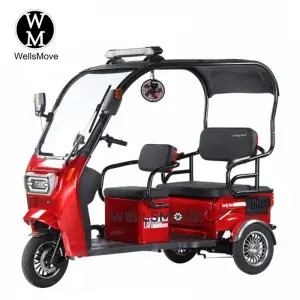Electrical safety test of mobility scooters for the elderly
In today’s global market, mobility scooters for the elderly, as a means of travel designed for the elderly and those with limited mobility, have attracted the attention of more and more international buyers. However, electrical safety is one of the core elements of mobility scooters for the elderly. It is not only related to the personal safety of users, but also directly affects the market competitiveness and compliance of products.
I. The importance of electrical safety testing
The electrical system of mobility scooters for the elderly is its core component, including batteries, motors, controllers, charging ports and other electronic devices. The electrical safety of these components is directly related to the performance of the vehicle and the safety of users. Electrical safety issues may cause serious accidents such as electric shock, fire, short circuit, and even endanger the life of the user. Therefore, electrical safety testing is a key link to ensure that mobility scooters for the elderly comply with international standards and regulations.
II. Main items of electrical safety testing of mobility scooters for the elderly
(I) Insulation resistance test
Insulation resistance is an important indicator for measuring the insulation performance of electrical equipment. For mobility scooters for the elderly, the insulation resistance should meet certain standards to prevent leakage and short circuit. According to relevant standards, the insulation resistance of mobility scooters for the elderly should not be less than 20MΩ@500VDC. This test is completed by using a high-precision insulation resistance tester to ensure that the vehicle’s electrical system can maintain good insulation performance under various working conditions.
(II) Charging interface temperature rise test
The charging interface is a key part of the electrical system of the elderly scooter, and its temperature rise directly affects the charging safety. In the test, the temperature rise of the charging interface should be controlled within 30K. By simulating the actual charging conditions and using an infrared thermal imager to monitor the temperature changes of the charging interface, its heat dissipation performance and safety can be effectively evaluated.
(III) Battery pack overcharge protection test
The battery pack is the power source of the elderly scooter, and its safety is crucial. The overcharge protection function is an important measure to prevent accidents caused by battery overcharging. The test requires that the overcharge protection response time of the battery pack should not exceed 2 seconds. Through a professional battery testing platform, simulate the battery overcharge scenario to verify whether the protection function of the battery management system (BMS) can cut off the charging circuit within the specified time, thereby ensuring the safety of the battery.
(IV) Leakage current test
Leakage current refers to the current that may appear between the casing of an electrical device and the ground under normal working conditions. According to the IEC 60601-1 standard, leakage current must be strictly controlled within a safe range. Excessive leakage current can cause electric shock to the user or even cause a fire. The leakage current tester can accurately measure the leakage current of the vehicle under different working conditions to ensure that it meets international safety standards.
(V) Electromagnetic compatibility (EMC) test
Electromagnetic compatibility refers to the ability of a device to work normally in a complex electromagnetic environment without adversely affecting surrounding equipment. Elderly scooters need to pass FCC Part 15 Class B certification to ensure that they can operate stably in various electromagnetic environments. EMC testing includes electromagnetic interference (EMI) and electromagnetic immunity (EMS). Through a professional electromagnetic compatibility test system, complex electromagnetic environments can be simulated to evaluate the electromagnetic compatibility performance of the vehicle.
(VI) Electrical connection integrity test
The integrity of the electrical connection is the basis for ensuring the normal operation of the electrical system. The test includes checking the connectivity of the line, the firmness of the connector, and whether there is a short circuit or open circuit. By using professional electrical testing equipment, the vehicle’s electrical system can be fully inspected to ensure that all electrical connections meet the design requirements, thereby ensuring that the vehicle’s electrical system can operate safely and reliably.
3. Standards and certification for electrical safety testing
(I) International standards
The electrical safety testing of mobility scooters for seniors needs to comply with a series of international standards, which provide clear guidance for the design, production and testing of products. For example, the IEC 60601-1 standard is the basic safety and performance standard for medical electrical equipment and is applicable to the electrical safety testing of mobility scooters for seniors. The standard sets strict requirements for key indicators such as leakage current, insulation resistance, and electromagnetic compatibility to ensure that the product can provide users with adequate safety protection during use.
(II) Certification requirements
In order to enter the international market, mobility scooters for seniors need to pass relevant certifications. For example, in the US market, mobility scooters for seniors need to pass FDA 510(k) certification. This certification requires that the product must comply with the IEC 60601-1 standard in terms of electrical safety and pass a series of rigorous tests to prove its safety and effectiveness. Certified products can gain market recognition and provide confidence and assurance for international buyers.
Post time: Jul-11-2025



